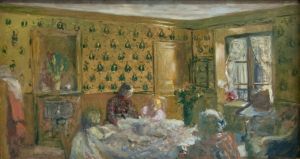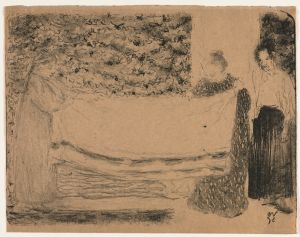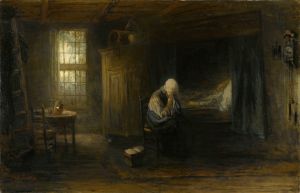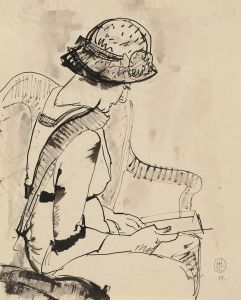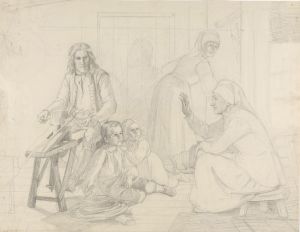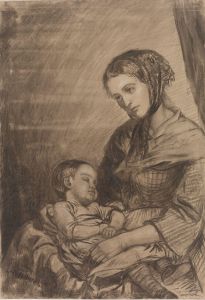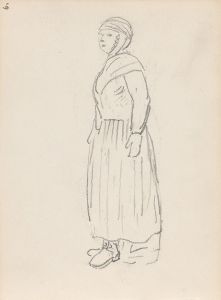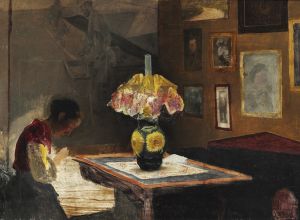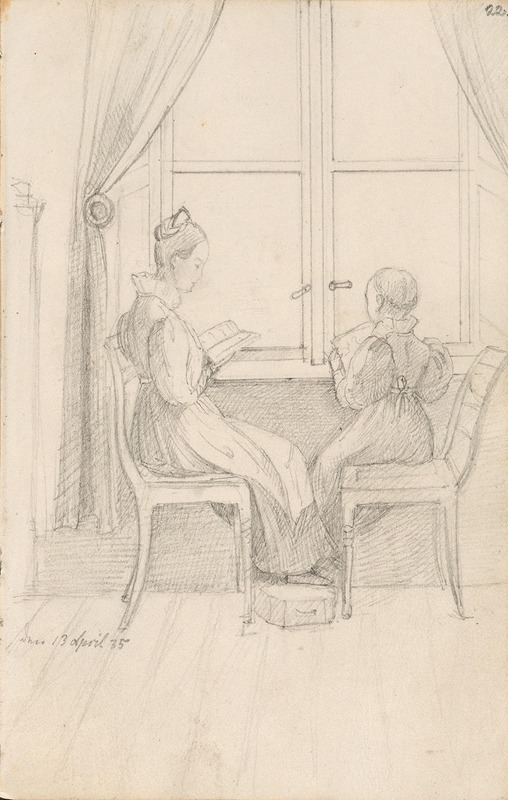
Lesende kvinne og barn ved et vindu
A hand-painted replica of Adolph Tidemand’s masterpiece Lesende kvinne og barn ved et vindu, meticulously crafted by professional artists to capture the true essence of the original. Each piece is created with museum-quality canvas and rare mineral pigments, carefully painted by experienced artists with delicate brushstrokes and rich, layered colors to perfectly recreate the texture of the original artwork. Unlike machine-printed reproductions, this hand-painted version brings the painting to life, infused with the artist’s emotions and skill in every stroke. Whether for personal collection or home decoration, it instantly elevates the artistic atmosphere of any space.
Adolph Tidemand was a prominent Norwegian painter in the 19th century, known for his detailed and realistic depictions of Norwegian folk life and traditions. One of his works, "Lesende kvinne og barn ved et vindu" (translated as "Reading Woman and Child by a Window"), exemplifies his focus on everyday scenes and the intimate moments of domestic life.
Adolph Tidemand was born on August 14, 1814, in Mandal, Norway. He studied art in Copenhagen and later in Düsseldorf, which was a significant center for art education at the time. Tidemand became associated with the Düsseldorf School of painting, which emphasized detailed and realistic portrayals of subjects, often with a focus on historical and genre scenes. His works often depicted Norwegian rural life, capturing the customs, costumes, and environments of his homeland with great fidelity.
"Lesende kvinne og barn ved et vindu" is a painting that reflects Tidemand's interest in capturing the quiet and contemplative moments of everyday life. The painting features a woman and a child engaged in reading by a window, a scene that suggests themes of education, family, and the transmission of knowledge. The use of natural light coming through the window highlights the figures and creates a serene and intimate atmosphere. This focus on light and its effects is characteristic of Tidemand's work, where he often used it to enhance the emotional and narrative content of his paintings.
The composition of the painting is carefully arranged to draw the viewer's attention to the interaction between the woman and the child. The setting is likely a domestic interior, typical of the period, which Tidemand often used to ground his scenes in a recognizable and relatable context. The attention to detail in the clothing and surroundings reflects Tidemand's commitment to realism and his desire to document the cultural heritage of Norway.
Tidemand's work, including "Lesende kvinne og barn ved et vindu," played a significant role in the development of Norwegian national identity during the 19th century. At a time when Norway was seeking to establish its cultural independence, artists like Tidemand contributed to a growing sense of national pride by celebrating the country's rural traditions and everyday life. His paintings were not only appreciated for their artistic merit but also for their cultural significance.
Throughout his career, Tidemand received numerous accolades and his works were exhibited widely, both in Norway and internationally. He was a key figure in the Norwegian romantic nationalism movement, and his paintings continue to be celebrated for their historical and cultural value.
"Lesende kvinne og barn ved et vindu" remains an important example of Tidemand's oeuvre, showcasing his ability to capture the essence of Norwegian life with sensitivity and precision. The painting is a testament to Tidemand's skill as an artist and his dedication to portraying the world around him with authenticity and care.





